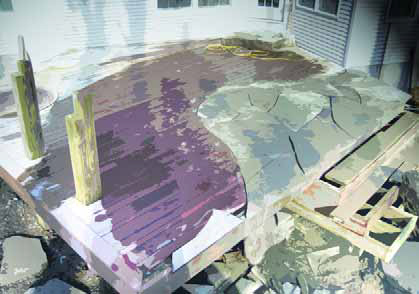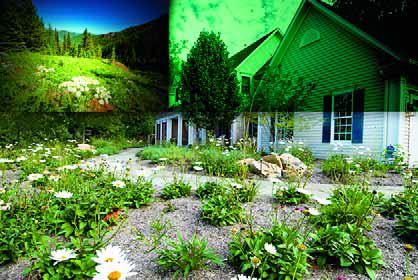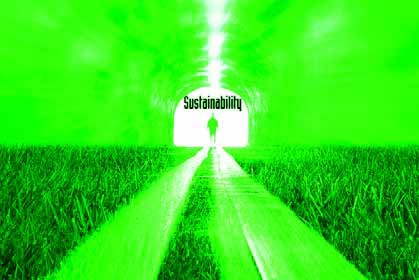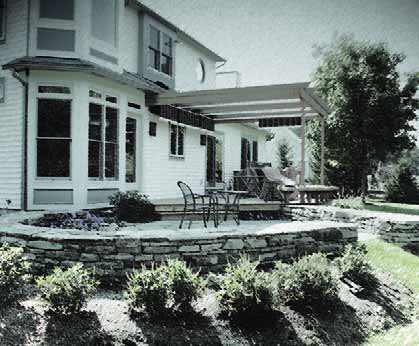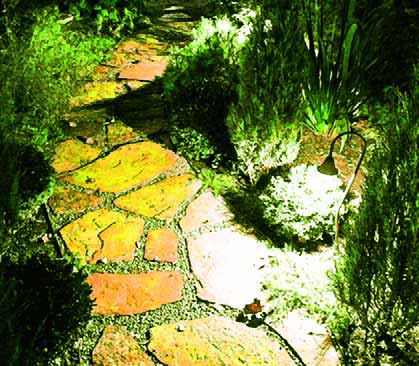On the Level
I’m sort of a curmudgeon when it comes to wood decks. They’ve been on the scene for a good 50 years now, and many of them are just fine – but I’ve spent an awful lot of time in my career loathing what I see and helping my clients remedy the short-sightedness of those who set them up in the first place. At times, I just wish everyone had stuck to stone. What really gets my goat are the uninspired linear expanses that poke aimlessly off the backs of houses. Residential developers often resort to
My part of New York hasn’t been hit too hard so far, but it seems these days as though much of the United States is in the throes of a sustained and (in places) severe drought. Even where I am, we’re in what the meteorologists are calling a “moderate” dry spell. This turn of events has made me determined to design landscapes requiring as little water as possible – one consequence being that I now do all I can to avoid using large expanses of
Last month, I discussed the benefits of sustainability and its place in landscape and watershape design. As I hope I conveyed, I think it is incumbent upon us as professionals to be responsible for our actions and constantly aware of the effects our work has on the environment, now and in the future. With the current severe drought desiccating the southeast, ongoing water problems in the west and increasing pressure on the water-supply infrastructure nationwide, it’s more important than ever that we
It seems that everyone’s talking about “sustainability” these days, with the usual thought being that, as exterior designers, good environmental stewardship must be one of our main missions. But what is sustainability? What do watershapers need to do to encompass this philosophy? As important, what does it mean to our clients, and where are they in all of this? According the numerous sources I’ve consulted, sustainability is defined as striving for the best outcome for both human and natural environments, now and well into the future. In other words, it’s about
I've always believed that an unlimited budget is not essential to making design magic. While having clients with deep pockets and a willingness to dig deeply into them is always nice and allows us a bit more leeway when it comes to artistic license, I've always observed that having relatively few constraints also tends to make some designers creatively lazy. By contrast, I've often found small-budget, small-space projects to be creatively stimulating. A couple of columns ago, for example, I discussed a project we'd been working on that posed challenges with its sunken deck footings and the need to accomplish a lot with
I've always believed that an unlimited budget is not essential to making design magic. While having clients with deep pockets and a willingness to dig deeply into them is always nice and allows us a bit more leeway when it comes to artistic license, I've always observed that having relatively few constraints also tends to make some designers creatively lazy. By contrast, I've often found small-budget, small-space projects to be creatively stimulating. A couple of columns ago, for example, I discussed a project we'd been working on that posed challenges with its sunken deck footings and the need to accomplish a lot with
Those of us who are designers and builders of full-scale outdoor environments (you know who you are) face a distinct challenge: In our work for our clients, we are expected to provide the outline and details for a huge range of project elements, from watershapes and patios to plantings and walkways and more. That list, at least so far as clients are concerned, also includes appropriate lighting, but that is not always something on which we focus. Indeed, lighting design is seen as a specialty even by those who tackle almost every other project feature - and there's no problem with that unless
Those of us who are designers and builders of full-scale outdoor environments (you know who you are) face a distinct challenge: In our work for our clients, we are expected to provide the outline and details for a huge range of project elements, from watershapes and patios to plantings and walkways and more. That list, at least so far as clients are concerned, also includes appropriate lighting, but that is not always something on which we focus. Indeed, lighting design is seen as a specialty even by those who tackle almost every other project feature - and there's no problem with that unless
Have you ever turned down a client who really wanted to work with you and you alone? It's a hard thing to do, which is why most of us have found ourselves at one time or another saying "yes" despite the fact that we believe something the clients want simply cannot be done or, more important, that we've developed serious doubts about them. Just at that point where we really need to sit them down and tell them to go away, many times we'll freeze - and here's the usual reason why: "If I tell them 'no,' then they'll just get someone else to do it and I'll lose the job!" Giving in to this fear of losing a project and letting apprehension guide our decisions in place of any faith we might have in our common sense or experience is
Have you ever turned down a client who really wanted to work with you and you alone? It's a hard thing to do, which is why most of us have found ourselves at one time or another saying "yes" despite the fact that we believe something the clients want simply cannot be done or, more important, that we've developed serious doubts about them. Just at that point where we really need to sit them down and tell them to go away, many times we'll freeze - and here's the usual reason why: "If I tell them 'no,' then they'll just get someone else to do it and I'll lose the job!" Giving in to this fear of losing a project and letting apprehension guide our decisions in place of any faith we might have in our common sense or experience is










